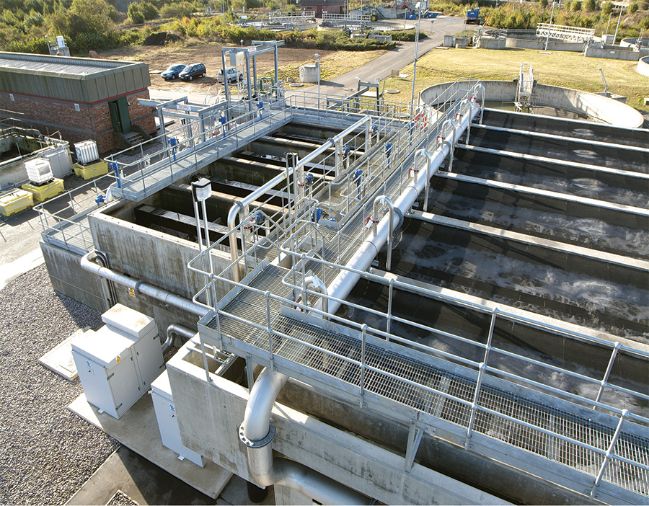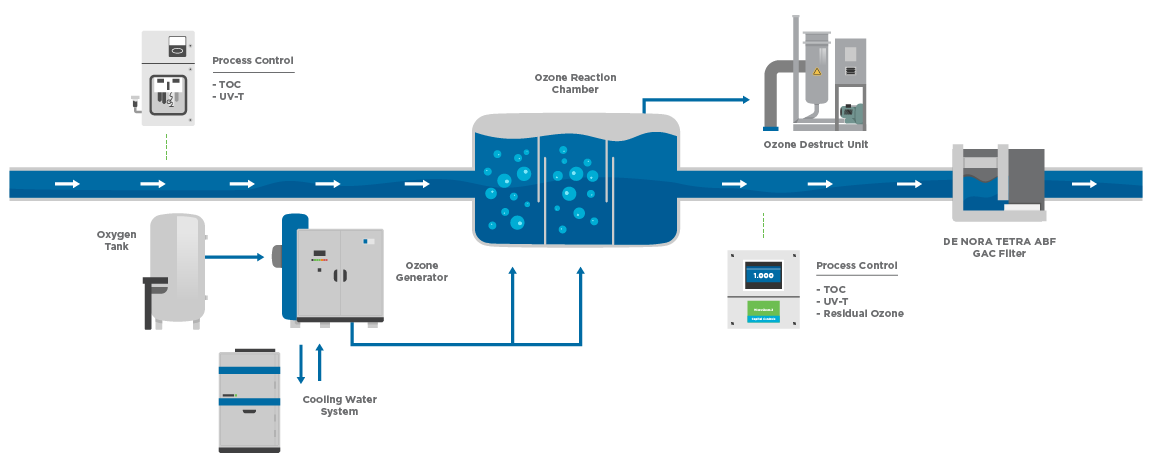Why Choose DE NORA TETRA ABF Systems?

Reduced ozone equipment cost: Combining ozone with a biological filter reduces the required ozone generation capacity, which means a smaller, less costly ozone generation system.
Reduced energy consumption: Because smaller ozone systems are needed, it means that you need less power to run your requirement.
Process does not require upstream RO or UF membranes: For indirect and direct potable reuse, the DE NORA TETRA ABF filter does not require expensive to own and operate membrane technology to achieve water reuse standards.
Disinfection Byproduct Reduction: The BAF biologically oxidizes commonly produced disinfection byproducts associated with ozone usage such as bromate, aldehydes and NDMA. It also provides a biologically stable effluent by oxidizing Assimilable Organic Carbon (AOC’s) generated by ozonation. Biologically stable effluent lowers the risk of undesirable downstream biofilm growth in the filter.
Indirect/direct Water Reuse: DE NORA TETRA ABF process versus conventional membrane-based process such as the Full Advanced Treatment (FAT) using Microfiltration/Ultrafiltration + Reverse Osmosis + Advanced Oxidation Process.
